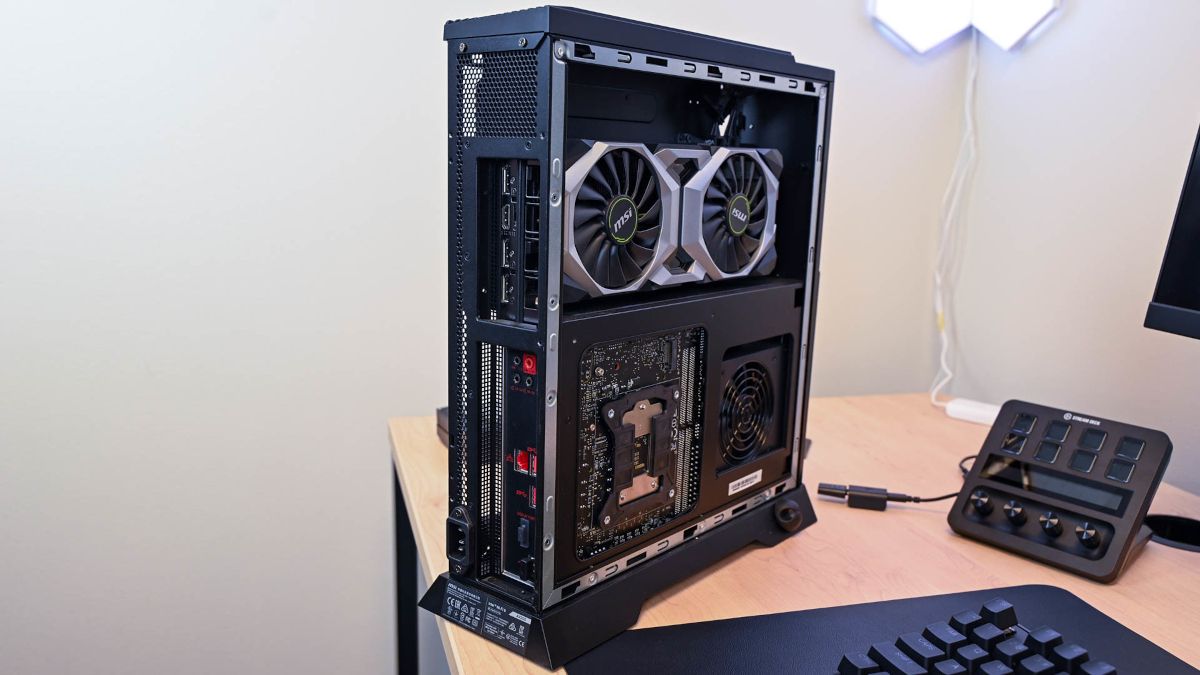Quick Links
Key Takeaways
A loud PC is likely due to fan noise. Reducing heat with more efficient airflow, better PC placement, and cleaning can help reduce noise. You can also manually control your fans, replace noisy and inefficient coolers, or swap out clicky hard drives for silent solid-state drives instead.
Does your computer sound like a jet engine? Maybe you've noticed some rattling, drones, or whines you've not heard before. Let's take a look at what causes a PC or laptop to get noisy, and what you can do about it.
Why Do Computers Make So Much Noise?
Your computer should make the most noise when it's under load. Expect a lot more fan noise when you're doing things like playing games or running software that taxes your computer like video editors or media converters. This is normal behavior, where fans ramp up to dissipate heat quickly.
You can help this process along by improving airflow inside your case. It's important to have designated intake and exhaust points within your fan. Ideally, you want one side of your case to suck in cool air and another to exhaust it. You can control this airflow by placing case fans inside your computer.
You should also make sure that your PC can breathe wherever it's placed. Stuffing your case in an enclosed space like a media unit or a cupboard can cause heat to build up within the confinement. Instead of sucking in cool air, your PC will continue to suck in warm which will make the fans work harder to dissipate heat and create more noise.
Make sure your PC has lots of room around it. If this isn't possible, consider installing fans into your media unit or wherever the PC lives to help exchange hot air for cool air. Follow the same principle as your case: intakes for cool air, exhaust points to remove warm air.
Reducing the ambient temperature can also help. Open a window to allow cool air into the room, or in the warmer months consider running the AC for a few hours a day to take the edge off. All sorts of devices can contribute to the ambient temperature including monitors and TVs, network equipment, and storage devices.
Fix 1: Blow Out the Cobwebs
Clean your PC case to remove dust, fluff, and other debris that's become trapped inside. This acts as an insulator, trapping warm air around some of the hottest components in your computer case. Don't forget to also clean fans, coolers, and heatsinks which can also become clogged.
You can clean your PC with a can of compressed air. Doing this regularly is essential if you have pets that shed hair. To make things easier, consider installing dust filters over the intakes. You can buy cheap magnetic dust filters that snap on, or order cut-to-size rolls specifically for your case. Some manufacturers (like Corsair) even make filters for specific cases.
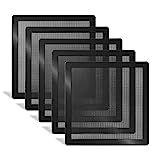
Magnetic PC Fan Dust Filter
Snap-on dust filters for your computer case air intakes, designed to cut down on the number of unwanted particles that enter your case.
If you go the dust filter route you will need to make sure that you clean the filters regularly to ensure that the PC can still breathe. Dust and fluff can quickly clog up your filters, which in the short term can be worse since it will block off intakes completely.
Laptops can get noisy for this reason too since the channels inside the chassis through which heat exchange takes place can be narrow and easily clogged. You might be able to open up your laptop to clean it, but be aware this will often void any warranty and that not all laptops are easy to reassemble.
Fix 2: Control Your Fans
You can monitor core components for heat to see how hot things are getting. This is especially useful if you do it while your computer is under load, to ensure that your current cooling is adequate. Apps like CPU-Z and GPU-Z (as well as manufacturer-specific graphics card utilities) can give you an idea of how hot things are getting.
Different components are rated for different maximum temperatures, and you'll find the exact maximum temperatures for your particular hardware listed on the manufacturer's specifications. For a CPU, expect a temperature range of between 104ºF and 176ºF (40ºC and 80ºC) while under load. Temperatures higher than 194ºF (90ºC) mean your processor is getting too hot.
The same is true for your GPU. The manufacturer will specify maximum temperatures, but as a rule of thumb, expect around 158ºF (70ºC) when playing a challenging game, with sustained temperatures above 185ºF (85ºC) considered too hot for most graphics cards.
If you're happy with your current temperatures and are convinced that your fan setup is adequate, your case isn't clogged with dust, and your fans are still making too much noise you can control them. How you do this depends on components like your motherboard, GPU, and the fans you have installed in your case.
How your fans connect to your computer can impact what you can do to control them. Sometimes it's a case of digging through your BIOS settings, other times you might be able to use an app like SpeedFan to control your fans from within Windows. Utilities like MSI Afterburner can help you control your GPU fans separately using profiles or curves.
Be careful when doing this since the slower your fans, the slower hot air will be exchanged for cool air. Less noise generally means higher temperatures, so make sure you find the right balance since heat can cause stability issues in the short term and reduce the lifespan of your components over time.
Fix 3: Replace Noisy Case Fans
If your fan is making a droning noise, the bearings may have failed and it's probably time to replace it. If you're hearing a clicking or buzzing noise, a cable may be caught on a fan blade so open up your case and carefully inspect all of your fans to see if you can spot any obvious problems. You can turn your computer on when the case is open to better isolate the problem.
You could also try replacing some of your noisier fans with fancier models. Generally speaking, larger fans don't have to work as hard as smaller fans since the larger blades are more efficient at moving air. This means they can run at slower speeds. Make sure you've got room in your case for this. Fan sizes are measured in millimeters, like 90mm, 120mm, or even 140mm.
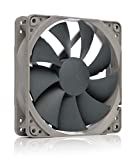
Noctua NF-P12 Cooling Fan (120mm)
This high-performance computer fan with a 4.8-star rating on Amazon is perfect for low-noise chassis ventilation.
Some manufacturers have made a name for themselves by creating quiet fans. Noctua and be quiet! are two such examples, but other companies create models that are designed to be as quiet as possible including Corsair (who create Quiet Edition fans), Cooler Master (particularly the Silencio), and Arctic.
Fix 4: Replace Noisy CPU Coolers
Stock CPU coolers can be noisy and inadequate, sometimes both. They might create a lot of noise due to small fans that have to spin at high speeds while lacking enough metal to dissipate heat sufficiently. Investing in a quality cooler for your CPU can fix both of these issues, all for under $100 (sometimes much less).
Air coolers don't have to be loud, even though they use fast-moving fans to dissipate heat. Switching your stock CPU cooler for something a little more premium like the Noctua NH-U12S or the be quiet! Dark Rock Pro 4 should reduce in better cooling and less noise. And don't forget to pick up some quality thermal paste while you're at it!
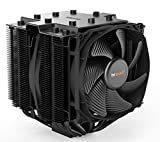
be quiet! Dark Rock Pro 4
The Dark Rock Pro 4 from be quiet! registers only 24.3 decibels at maximum speed. Compatible with AMD AM4 and AM5 or Intel 1700, 1200 2066, 1150, 1151, 1155, 2011(-3).
Water cooling is another solid option if your budget can go a little further. AIO (all-in-one) coolers still require fans, but the overall operation is still a lot quieter than comparable air coolers. Airflow is essential for exhausting heat stored in the radiator, so you'll need to dedicate space along one edge of your case for the radiator if you go for something like the NZXT Kraken X63, Corsair H100i, or Lian Li Galahad 240 AIO.
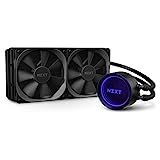
NZXT Kraken X63 280mm
NZXT's all-in-one liquid cooler registers 21 to 36 decibels while in use, just make sure you have room for the attached radiator. Compatible with AMD AM4 and AM5 sockets, or Intel LGA 1151, 1150, 1155, 1156, 1366, 2011(-3), 2066.
You can replace a GPU cooler and the thermal paste on which it sits too, but this isn't quite as straightforward as a CPU cooler swap. You'll need to find coolers that fit your graphics card, and changing the cooler will likely void any warranty you have left. The gains may not make much sense financially, and your money may be better spent on an upgrade down the line.
If your GPU fan is frequently spinning at maximum speed, the first thing to check is the airflow near that part of the case. You may be able to improve thermals (and noise) by installing a cheap case fan instead.
Fix 5: Pick a Quiet PC Case and Power Supply
Another upgrade you can perform is to change your PC case to one designed to minimize unwanted noise. A good case will last you many years and see you through several major upgrades (as long as there's enough room for whatever you're upgrading to).
be quiet! cases are especially good at this, with products at several different price points and sizes depending on your needs. Start with a budget-friendly option like the Pure Base 600 or splash out on the Dark Base 900 with pre-installed fans. Other brands like Corsair also create silent cases (like the Corsair 100R Silent Edition) as does Fractal Design (consider the Define and Define Mini ranges).
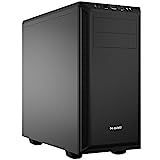
be quiet! Pure Base 600 Black
A case designed to dampen sounds can help reduce the overall noise level of any PC, plus it's a component you can make use of time and time again.
Your power supply shouldn't make a ton of noise but like many other components in your PC, it uses a fan to dissipate heat. be quiet! also make power supplies like the Straight Power 11, while Thermaltake's Smart PSU is another solid choice. Corsair's RMX Series is another good choice, with a zero RPM fan mode for temporary passive cooling.
Fix 6: Replace Your Hard Drive With an SSD
Hard drives are much noisier than their solid-state counterparts, especially failing hard drives. Though they're a cost-effective way of adding storage, they're slow, prone to failure, and noisy when reading and writing. The audible clicking noise is the sound of the mechanical arm moving across the platter, and the "spinning up" noise is the platter getting up to speed after a period of inactivity.
You can solve this by replacing your hard drives with solid-state drives. You don't even need to spend big on these if they're simply used as storage for media and other files. Something like the Samsung 870 EVO SATA III 1TB 2.5" internal drive offers a big upgrade over an equivalent hard drive, or you can go for a faster Samsung 980 NVMe M.2 (PCIe 3.0x4) for around the same price.
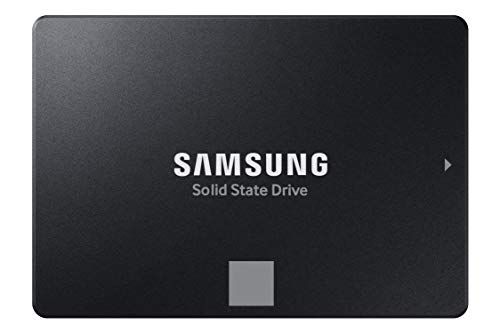
Samsung 870 EVO 1TB SATA 3 SSD
Replace your noisy SATA hard drives with the Samsung 870 EVO and kiss goodbye to those annoying clicking and spinning noises.
Fix 7: Drown the Noise Out
If you can't get over the sound your laptop makes, consider drowning it out with some of the best computer speakers money can buy. Alternatively, get a good pair of headphones instead. Moving a PC tower to a different room from where you're working is entirely doable too with the right tools
Finally, a mechanical keyboard can complete your setup but make sure you know the difference between the different types of switches so that you don't pick something too noisy or tactile for your tastes.

